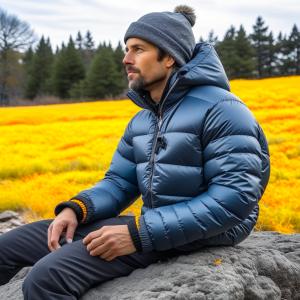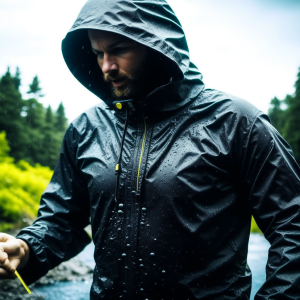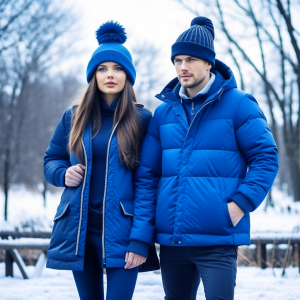Mastering Layered Cold Weather Clothing for Ultimate Warmth and Chic Style
As winter envelops us in its frigid embrace, the pursuit of warmth coupled with stylish clothing becomes essential. The plummeting temperatures necessitate strategic layering of our garments, but have you ever considered the intricate science behind effective layering techniques? In this comprehensive guide, we will explore the fundamentals of cold-weather clothing layering, revealing the principles that distinguish superior garments in the relentless fight against the biting cold, ensuring your comfort and elegance throughout the winter months.
Layering your clothing is not just a fashion choice; it represents a strategic technique aimed at optimizing heat retention and ensuring comfort during icy conditions. When temperatures drop, our bodies instinctively react by constricting blood vessels to conserve heat, often resulting in cold extremities. However, this natural physiological response may not suffice alone. This is where the art and science of layering become crucial, enabling us to create an effective thermal barrier against the cold while maintaining freedom of movement and overall comfort.

Creating an Effective Base Layer: The Essential Starting Point for Winter Warmth
The base layer is the cornerstone of your winter wear, designed to fit snugly against your skin while offering essential insulation. To truly appreciate the significance of this layer, we need to delve deeper into the science of moisture management and its profound influence on your warmth and comfort during the chilly months ahead.
Utilizing Moisture-Wicking Fabrics for Ultimate Comfort
Choosing the right material for your base layer is critical for achieving optimal moisture management. The impact of moisture-wicking properties is vital, as these specially designed fabrics effectively draw moisture away from your skin—be it sweat or external moisture—preventing accumulation that could lead to discomfort. A high-quality base layer not only acts as a moisture barrier but also keeps you dry and cozy, even in the face of challenging weather conditions, significantly enhancing your overall warmth and comfort.
Assessing Insulation: The Benefits of Merino Wool and Synthetic Fabrics
Let’s now examine how materials like merino wool and synthetic fibers enhance the insulating capabilities of your base layer. Merino wool is prized for its natural warmth and breathability, making it an exceptional choice as it provides insulation while efficiently wicking moisture. In contrast, synthetic materials such as polyester and nylon offer an excellent balance of durability and insulation, creating a warm microclimate against your skin that effectively retains body heat, ensuring you stay comfortable even in the harshest winter conditions.
Finding the Ideal Fit: Essential Tips for Base Layer Performance
Selecting the right fit for your base layer involves more than just choosing your typical size; it’s about maximizing its efficiency. A snug-fitting base layer maintains consistent contact with your skin, boosting both its insulating and moisture-wicking abilities. However, it’s essential to find the right balance—too tight can restrict movement and comfort, while too loose may hinder performance. When considering fit, factor in the type of activity and your overall layering strategy to ensure seamless integration with your additional cold-weather attire.
Ultimately, the base layer transcends being just another piece of clothing; it serves as an advanced moisture-wicking and insulating barrier against the harsh winter air. By understanding the unique properties of materials like merino wool and synthetic fibers, along with mastering the fit, you can elevate your base layer into a critical component of your defense against the cold.
Maximizing the Insulating Layer: A Crucial Element for Retaining Body Heat
 As we turn our attention to the insulating layer, we highlight its critical role in capturing and retaining heat around your body. This layer is indispensable in the science of heat retention, acting as a protective cocoon against the harsh elements of winter. Let’s investigate important aspects such as warmth-to-weight ratios, the advantages of down insulation, and the eco-friendly benefits of synthetic alternatives.
As we turn our attention to the insulating layer, we highlight its critical role in capturing and retaining heat around your body. This layer is indispensable in the science of heat retention, acting as a protective cocoon against the harsh elements of winter. Let’s investigate important aspects such as warmth-to-weight ratios, the advantages of down insulation, and the eco-friendly benefits of synthetic alternatives.
Understanding Warmth-to-Weight Ratios for Effective Insulation
Comprehending the concept of warmth-to-weight ratios is essential when selecting your insulating layer. This principle emphasizes that insulation materials should deliver excellent warmth without introducing unnecessary bulk. In essence, it’s about achieving maximum warmth while minimizing weight to ensure you can move comfortably. This balance is particularly important for those who require insulation without feeling encumbered, allowing for free and unrestricted movement in cold environments.
Down Insulation: Lightweight Warmth for Outdoor Enthusiasts
Down insulation stands out as a premier choice for individuals seeking unparalleled warmth in a lightweight form. Sourced from the soft feathers of ducks and geese, down is famous for its exceptional warmth-to-weight ratio. Its lightweight and compressible nature makes it a favored option for winter adventurers who require effective insulation without compromising mobility. Understanding the allure of down insulation is vital in appreciating its role in creating an insulating layer that seamlessly blends warmth, comfort, and flexibility.
Opting for Synthetic Insulation: Ethical Warmth for All Weather Conditions
Synthetic insulation materials, primarily constructed from polyester fibers, have gained popularity as ethical alternatives in the insulation landscape. What sets synthetic insulation apart is its ability to retain heat even in damp conditions, an area where down may falter. This durability in unpredictable weather makes synthetic fabrics ideal for varying climates. Additionally, choosing synthetic options aligns with ethical values, allowing you to enjoy warmth without compromising your principles.
Determining the Right Thickness: Precision in Insulation Choices
Selecting the appropriate thickness for your insulating layer requires meticulous consideration; precision is essential. Assess the expected level of cold exposure alongside your layering strategy when deciding on thickness. In milder climates, a thinner insulating layer may suffice, while harsher conditions may call for a thicker, more robust option. By understanding the details surrounding insulation thickness, you can customize your insulating layer to meet the specific requirements of your winter activities.
In conclusion, the insulating layer evolves beyond traditional clothing functions, becoming a strategic partner in the battle against the cold. By deciphering the complexities of warmth-to-weight ratios, recognizing the benefits of down insulation alongside synthetic alternatives, and offering guidance on thickness selection, we can transform the insulating layer into a calculated defense mechanism against winter’s icy hold.
The Outermost Layer: Your Essential Defense Against Winter’s Harsh Elements
The outermost layer functions as your vital shield against biting winds and frigid temperatures. This layer serves two primary purposes: protecting against environmental elements and playing a significant role in moisture management. As we explore the outer layer further, we will uncover the importance of breathability, the transformative properties of DWR finishes and Gore-Tex membranes, and the essential windproof features that enhance insulation effectiveness.
Breathability: The Cornerstone of Comfort and Effective Moisture Management
Often underestimated, breathability is a crucial attribute of the outer layer that significantly influences overall comfort. This feature relates to the fabric’s ability to allow sweat vapor to escape while keeping external moisture at bay. Achieving this balance is vital for staying dry and comfortable, mitigating the chilling effects of trapped moisture. A breathable outer layer is essential for maintaining a cozy microclimate within your clothing, ensuring exceptional comfort during inclement weather.
DWR Finishes and Gore-Tex: The Apex of Waterproofing Innovation
 DWR (Durable Water Repellent) coatings and Gore-Tex membranes lead the way in the realm of cold-weather outerwear. DWR finishes endow fabrics with water-repellent qualities, forming a solid barrier against rain, sleet, and snow. Gore-Tex and similar technologies elevate waterproofing capabilities by providing an optimal combination of impermeability and breathability. Understanding how these technologies work together is essential for remaining dry and comfortable, even in the most challenging weather conditions.
DWR (Durable Water Repellent) coatings and Gore-Tex membranes lead the way in the realm of cold-weather outerwear. DWR finishes endow fabrics with water-repellent qualities, forming a solid barrier against rain, sleet, and snow. Gore-Tex and similar technologies elevate waterproofing capabilities by providing an optimal combination of impermeability and breathability. Understanding how these technologies work together is essential for remaining dry and comfortable, even in the most challenging weather conditions.
Windproof Features: Fortifying Your Defense Against Cold Winds
Windproof characteristics are crucial in frigid weather, particularly when biting gusts can penetrate even the most robust fabrics. The windproof outer layer acts as an impenetrable barrier against cold air, enhancing comfort while protecting the insulation of your inner layers. By blocking the chill of the wind, your outer layer becomes a formidable protector, ensuring that your carefully chosen layers work in harmony to keep you warm and shielded from harsh elements.
In essence, the outermost layer is more than just a protective covering; it serves as an advanced barrier that skillfully balances breathability and waterproofing. By grasping the significance of breathability, examining the innovations of DWR finishes and Gore-Tex membranes, and acknowledging the vital role of windproof features, we can elevate the outer layer into a dynamic garment that excels in style, functionality, and weather resistance.
Effective Strategies to Achieve Optimum Warmth and Style This Winter
With a thorough understanding of effective layering in place, let’s delve into actionable tips and strategies to enhance your cold-weather experience, seamlessly merging warmth with enduring style. Accessories play an essential role in winter attire, often acting as unsung heroes that can elevate your overall look. From the crucial warmth provided by well-selected gloves to the stylish accent of a cozy hat and the comfort of thermal socks, these seemingly minor details are instrumental in crafting a fashionable and comfortable winter ensemble.
The Essential Role of Accessories: More Than Just Aesthetic Appeal
Accessories are much more than simple embellishments; they are vital components of your defense against the cold. Beyond their visual appeal, items such as gloves, hats, and thermal socks serve crucial functions in enhancing your overall warmth. By thoughtfully incorporating these accessories into your outfit, you can ensure that every part of your body is shielded from the chill, effectively preventing valuable body heat from escaping into the frigid air.
Investing in Quality Accessories: Recommendations for Ultimate Comfort
The quest for warmth extends beyond your base and insulating layers; it also involves the careful selection of accessories. Invest in high-quality gloves made from insulating materials such as fleece or lined leather to create a robust barrier against the cold. A warm hat featuring additional insulation or a cozy faux-fur lining not only enhances your style but also aids in heat retention. Opt for thermal socks crafted from merino wool or advanced synthetic blends to ensure maximum warmth and effective moisture management.
Fashion-Forward Tips: Merging Functionality with Style
Staying warm during freezing conditions doesn’t have to mean sacrificing style. Leverage these clever styling techniques to navigate the winter landscape with confidence. Experiment with layering various textures in your outfit to create visual interest while simultaneously improving insulation. Choose winter-appropriate colors that complement the snowy backdrop, and don’t hesitate to accessorize with bold pieces like a vibrant scarf or chic earmuffs to elevate your overall look.
In summary, accessories are the understated architects of a well-rounded winter outfit. They not only enhance warmth but also allow you to showcase your personal style even in the coldest conditions. By selecting high-quality accessories and infusing your winter wardrobe with thoughtful styling, you can master the chill while exuding undeniable elegance.
Embrace the Perfect Blend of Style and Functionality in Your Winter Wardrobe
As we conclude our exploration of conquering the cold, it’s crucial to acknowledge the significance of style in winter clothing. Dressing for the cold doesn’t mean compromising your fashion sense; instead, the modern fashion landscape celebrates the harmonious integration of functionality and flair. Numerous outdoor and fashion brands have recognized and embraced the need for winter gear that not only keeps you warm but also conveys confidence and contemporary elegance.
The Revolution of Cold-Weather Clothing: A Stylish New Era
 The cold-weather clothing industry is experiencing a remarkable transformation, where winter gear transcends basic functionality to become a hallmark of innovation and style. Designers and brands increasingly recognize the demand for clothing that seamlessly blends practicality with aesthetic charm. This paradigm shift has ushered in a new era of outerwear that not only provides warmth but also captivates with its visual appeal.
The cold-weather clothing industry is experiencing a remarkable transformation, where winter gear transcends basic functionality to become a hallmark of innovation and style. Designers and brands increasingly recognize the demand for clothing that seamlessly blends practicality with aesthetic charm. This paradigm shift has ushered in a new era of outerwear that not only provides warmth but also captivates with its visual appeal.
Pioneering Brands: Merging Fashion with Functionality
Several leading brands are at the forefront of this style evolution, skillfully combining fashion and functionality in their winter apparel. Canada Goose is renowned for its luxurious down coats that deliver exceptional warmth without compromising style. The North Face incorporates cutting-edge technology into its designs, crafting outerwear that strikes a perfect balance between chic aesthetics and practical functionality. Meanwhile, Moncler has redefined the puffer jacket, transforming it into a high-fashion statement piece, proving that winter clothing can be both practical and runway-ready.
Strategic Styling: Elevate Your Winter Fashion Game
Now, let’s explore how to effectively merge warmth and style in your winter outfits. Choose standout pieces that fulfill both functional and aesthetic roles, such as a beautifully tailored wool coat or a sleek parka that acts as the centerpiece of your ensemble. Experiment with layering a chunky knit sweater over a fitted jacket for a cozy yet stylish appearance. Don’t shy away from introducing vibrant colors into your winter look by accessorizing with eye-catching scarves or trendy boots.
Ultimately, embracing style in the cold is no longer a contradiction; it’s a vibrant reality shaped by a dynamic fashion industry. As fashionable cold-weather gear emerges, adorned by innovative brands, the narrative shifts from mere survival to personal expression. So, immerse yourself in this style renaissance, select pieces that empower you, and redefine fashion amidst the wintry embrace of the season.
The post Cold Weather Clothing Layers: The Science Explained appeared first on Survival Bite.
The Article Cold Weather Clothing Layers Explained: Understanding the Science Was Found On https://limitsofstrategy.com


Your exploration of layered cold weather clothing strikes a resonant chord, especially during the winter months when maintaining warmth and style can present unique challenges. The science of layering indeed merits closer examination, as it not only serves functional purposes but also encapsulates broader themes of personal expression and adaptability.